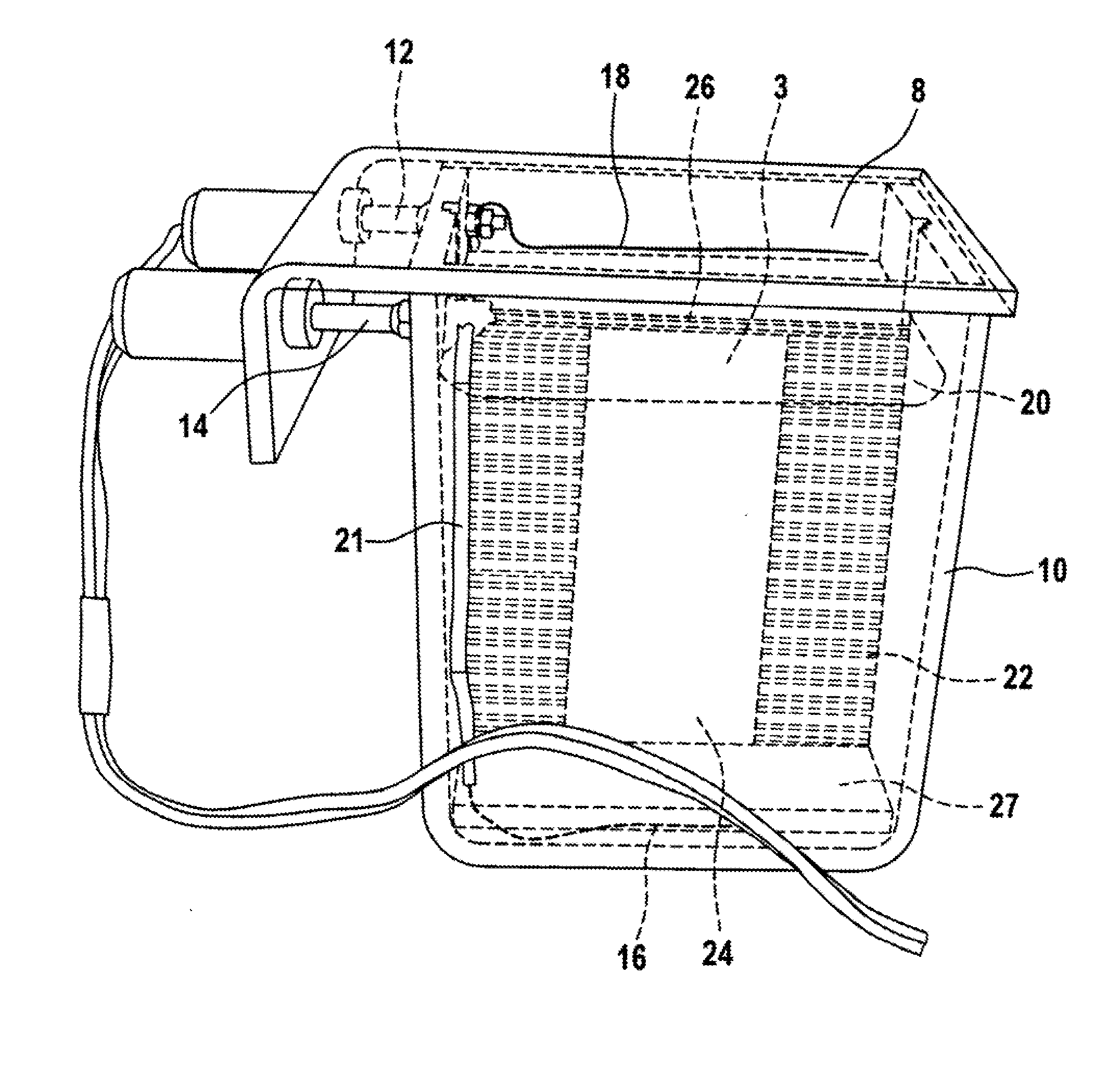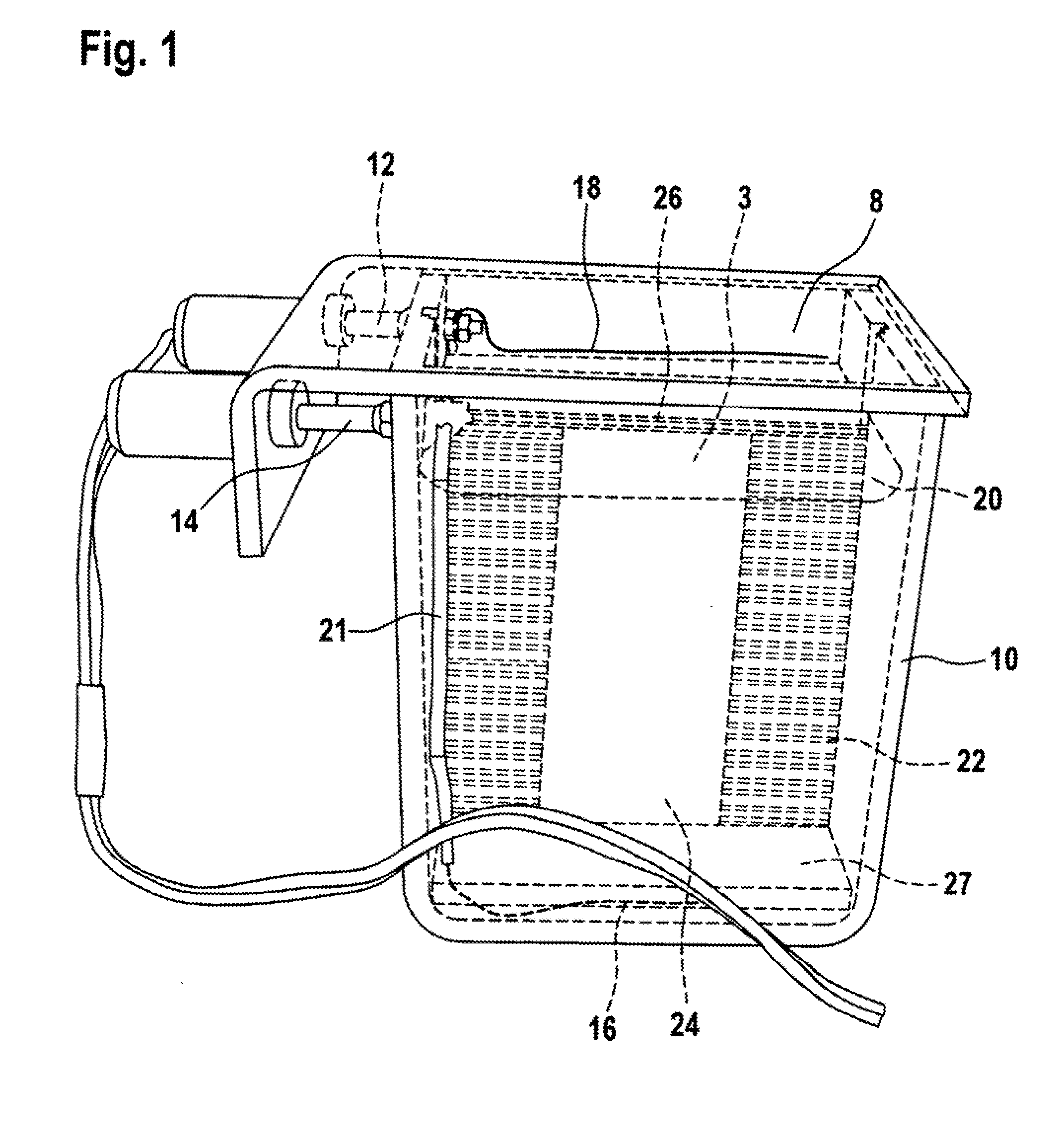Apparatus, method, and gel system for analytical and preparative electrophoresis
a gel system and electrophoresis technology, applied in the direction of fluid pressure measurement, liquid/fluent solid measurement, peptide measurement, etc., can solve the problems of large amount of sample loss, large number of reagents, and complicated methods
- Summary
- Abstract
- Description
- Claims
- Application Information
AI Technical Summary
Benefits of technology
Problems solved by technology
Method used
Image
Examples
Embodiment Construction
[0006]The goal of the present invention is to provide an electrophoresis apparatus by means of which analytical or preparative separation and isolation of biological molecules can be carried out quickly and efficiently without the use of gel extraction.
[0007]This goal is achieved by an electrophoresis apparatus according to claim 1 and by a method for electrophoretic separation and collection of biological molecules according to claim 9.
[0008]Preferred embodiments of the invention can be found in the subclaims.
[0009]Electrophoresis gels are usually cast between two glass plates, which are sealed off at the sides by two distance holders (spacers). These plate-gel systems are used especially for vertical gel electrophoresis processes. The thickness of the gel is defined in this case by the height of the spacers. Vertical gel electrophoresis makes it possible to achieve a much higher degree of separation of the molecular fractions than is possible with, for example, the horizontal gel ...
PUM
| Property | Measurement | Unit |
|---|---|---|
| Angle | aaaaa | aaaaa |
| Biological properties | aaaaa | aaaaa |
| Electric field | aaaaa | aaaaa |
Abstract
Description
Claims
Application Information
 Login to View More
Login to View More - R&D
- Intellectual Property
- Life Sciences
- Materials
- Tech Scout
- Unparalleled Data Quality
- Higher Quality Content
- 60% Fewer Hallucinations
Browse by: Latest US Patents, China's latest patents, Technical Efficacy Thesaurus, Application Domain, Technology Topic, Popular Technical Reports.
© 2025 PatSnap. All rights reserved.Legal|Privacy policy|Modern Slavery Act Transparency Statement|Sitemap|About US| Contact US: help@patsnap.com



